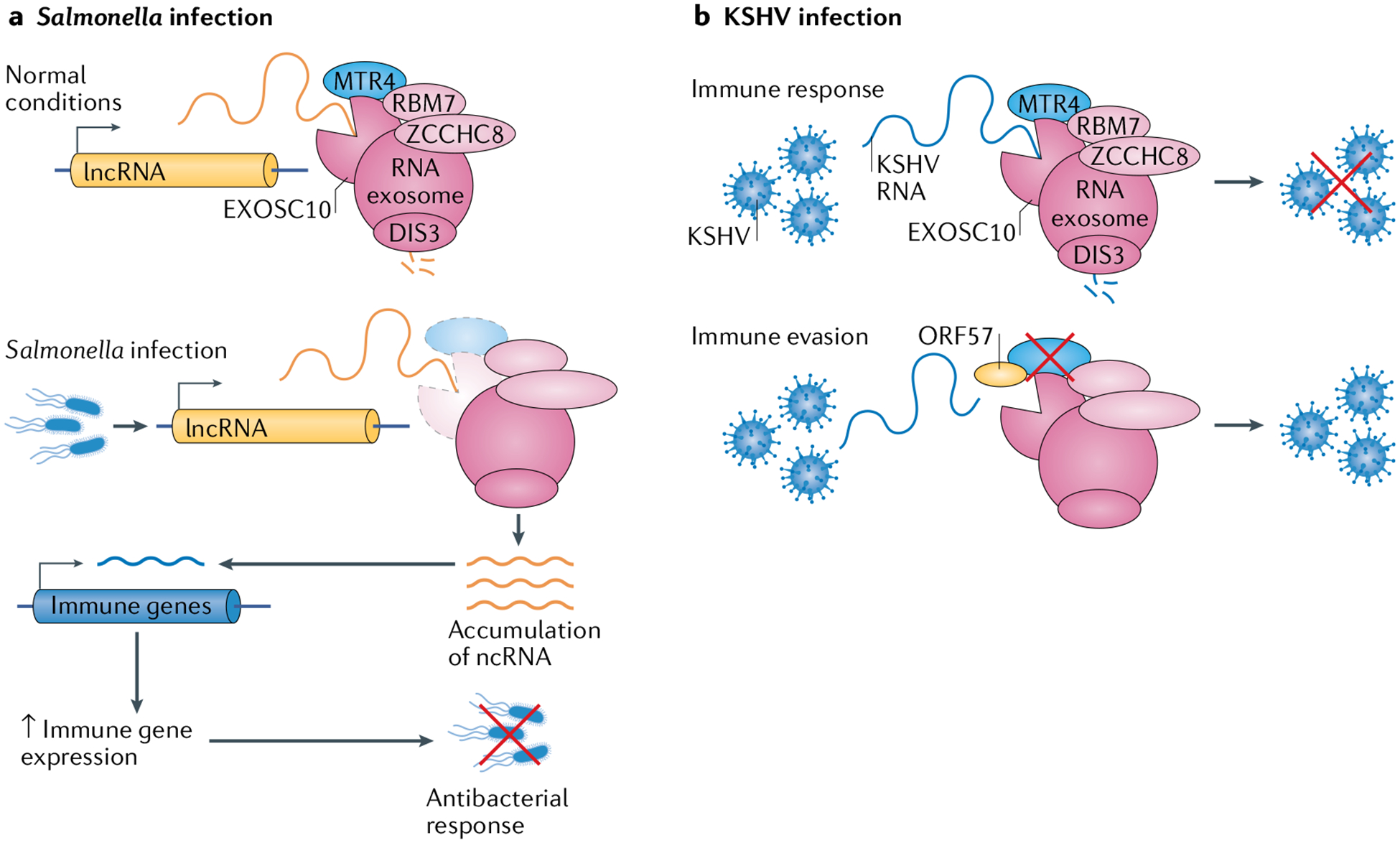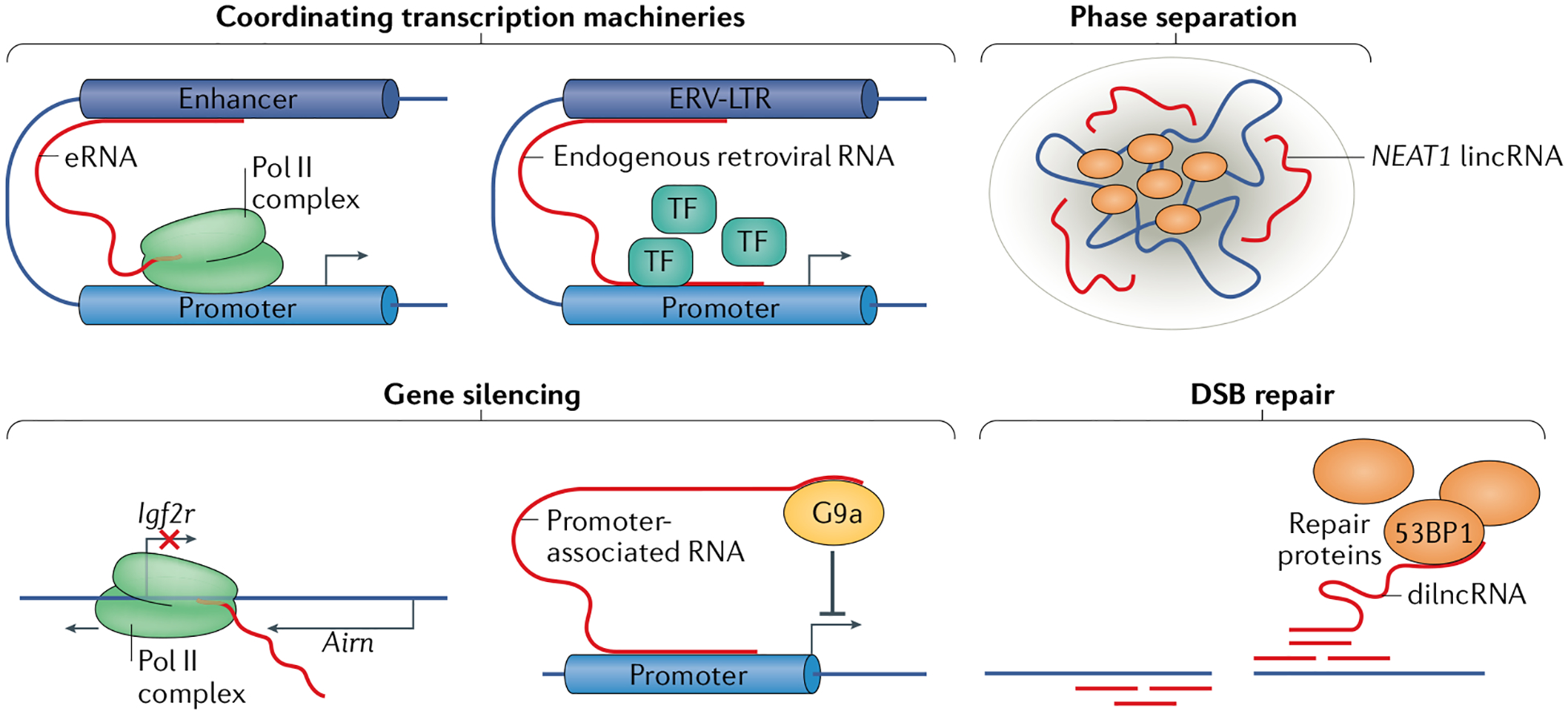Fig. 4 |. The biological relevance of RNA surveillance.


a | The role of RNA surveillance in bacterial infection is highlighted in the regulation of RNA exosome function in response to Salmonella enterica serovar Typhimurium (Salmonella) infection. The RNA exosome normally degrades many long non-coding RNA (lncRNA) transcripts. Following Salmonella infection, exosome component 10 (EXOSC10) and the RNA exosome-associated helicase MTR4 are degraded, resulting in lncRNA accumulation. These transcripts then activate transcription of immune genes and increase the immune response, thereby clearing the Salmonella infection. The specific mechanisms by which this process occurs are as yet unknown. b | A role for RNA surveillance in viral infection was uncovered in studies of host–pathogen interactions in Kaposi’s sarcoma-associated herpesvirus (KSHV) infection. KSHV infection is kept at bay by the degradation of viral transcripts by the RNA exosome. However, KSHV has a counter measure: the viral protein ORF57, which prevents access of RNA (including viral transcripts) to the RNA exosome, specifically by blocking access to MTR4. This allows the expression of viral proteins and viral persistence. ncRNA, non-coding RNA; RBM7, RNA-binding protein 7; ZCCHC8, zinc finger CCHC domain-containing protein 8.
